So you’ve decided it’s time to build impressive leg muscles. You’re hitting the gym with determination and visions of massive quads and powerful hamstrings. But before you dive headfirst into your leg day routine, pump the brakes. Not all exercises are created equal when it comes to sculpting those impressive lower limbs. I’ve rounded up seven of the least effective exercises for building bigger leg muscles and what to do instead.
The journey to powerful legs isn’t just about sweating it out with any old leg exercise; it’s about efficiency, effectiveness, and a touch of strategy. In this guide, I’ll unveil the seven least effective exercises for building leg muscles and provide solid alternatives to maximize your efforts. Get ready to trade in those ineffective moves for some serious leg-building power exercises.
1. Leg Extensions
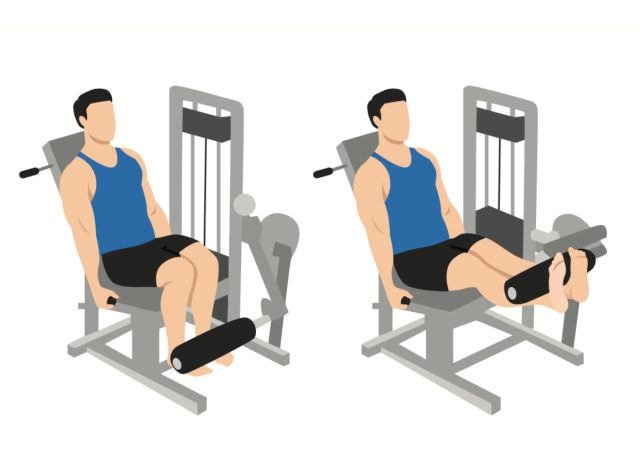

Leg extensions primarily isolate the quadriceps, often neglecting the hamstrings, glutes, and other stabilizing muscles. This can lead to imbalanced muscle growth and doesn’t effectively promote overall leg strength.
Additionally, the fixed plane of motion in leg extension machines can place undue stress on the knee joints, potentially leading to injury over time. Relying heavily on leg extensions can result in a lack of functional strength, as this exercise doesn’t mimic real-life movements or engage multiple muscle groups necessary for comprehensive leg development.
What You Should Do Instead: Squats
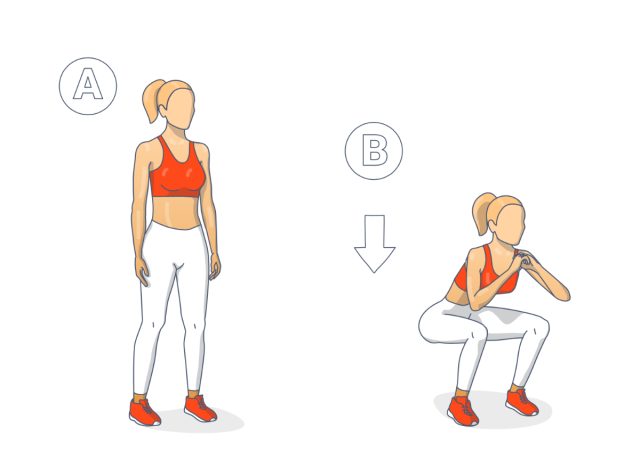

Squats are a compound movement that targets the quadriceps, hamstrings, glutes, and lower back. They promote balanced muscle growth and overall leg strength. By engaging multiple muscle groups and requiring coordination and balance, squats enhance functional strength and athletic performance. The natural movement pattern of squats also helps in improving joint health and stability, making them a superior choice for long-term leg development.
Incorporating variations like front squats or goblet squats can further enhance muscle activation and growth.
How to Do Squats:
Stand with your feet shoulder-width apart. Lower your body as if sitting back into a chair until your thighs are parallel to the ground. Push through your heels to return to the starting position.
2. Seated Leg Curls
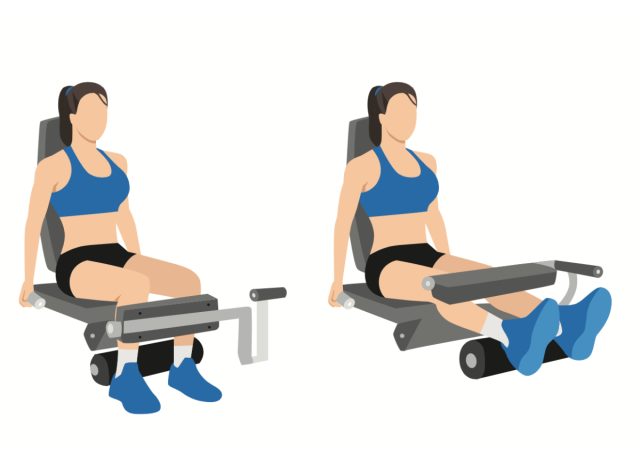

Seated leg curls focus on the hamstrings but don’t engage the glutes or the stabilizing muscles of the core and lower back, limiting overall leg muscle development. This isolation can lead to muscle imbalances and a lack of coordination between muscle groups, which is essential for functional strength and injury prevention.
Furthermore, the seated position reduces the involvement of other key muscles, resulting in a less comprehensive leg workout. Over-reliance on seated leg curls can lead to underdeveloped glutes and hamstrings, hindering overall leg strength and aesthetics.
What You Should Do Instead: Romanian Deadlifts
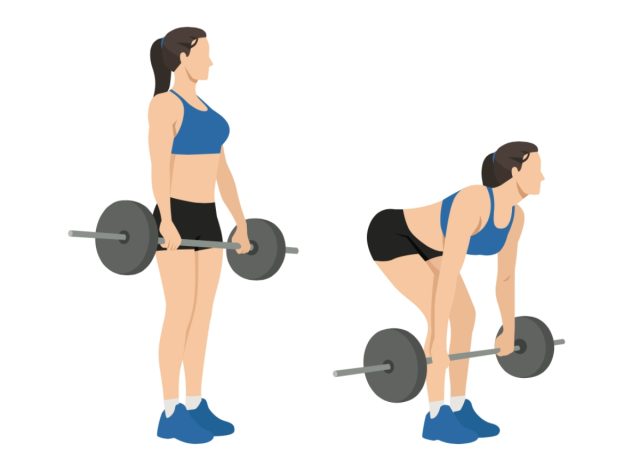

Romanian deadlifts target the hamstrings, glutes, and lower back, promoting better muscle engagement and growth. This exercise not only enhances muscle coordination but also improves hip mobility and lower back strength, which are crucial for overall leg development and functional fitness. Romanian deadlifts also activate stabilizing muscles, providing a more balanced and effective leg workout.
Incorporating this exercise into your routine can lead to significant improvements in strength, muscle size, and overall athletic performance.
How to Do Romanian Deadlifts:
Stand with your feet hip-width apart, holding a barbell before your thighs. Hinge at the hips and lower the barbell to just below your knees, keeping your back straight. Return to the starting position by thrusting your hips forward.
3. Thigh Abductor Machine
The thigh abductor machine isolates the outer thighs and glutes but doesn’t provide a full range of motion or engage other leg muscles effectively. This limited engagement can lead to imbalances and a lack of overall leg strength, as the exercise doesn’t involve the core or stabilizing muscles. The fixed path of the machine restricts natural movement patterns, reducing functional strength gains.
Additionally, relying solely on this machine can result in a lack of coordination and stability in the hip region, which is essential for overall leg and lower-body strength.
What You Should Do Instead: Lateral Lunges
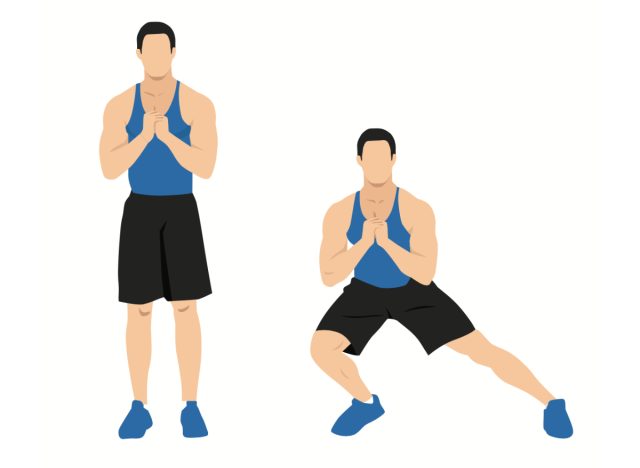

Lateral lunges work the outer thighs, glutes, and inner thighs while engaging your core and improving balance. This exercise promotes functional strength and stability, enhancing overall athletic performance and reducing the risk of injuries.
By incorporating lateral lunges, you activate multiple muscle groups and improve coordination, making your workouts more efficient and effective. This movement also mimics real-life activities, improving your ability to perform daily tasks and sports-related movements with ease and confidence.
How to Do Lateral Lunges:
Stand with your feet together. Step to the side with one leg, lowering your body until that thigh is parallel to the ground. Push through your heel to return to the starting position.
4. Smith Machine Squats
Smith machine squats can limit the natural movement of your body and put unnecessary strain on your knees and lower back, leading to ineffective muscle activation. The fixed bar path restricts the natural biomechanics of a squat, reducing the engagement of stabilizing muscles and leading to potential imbalances.
This machine-assisted movement can also create a false sense of strength, as it doesn’t require the same level of balance and coordination as free-weight squats. Over time, relying on Smith machine squats can hinder overall leg development and functional strength.
What You Should Do Instead: Barbell Back Squats
Barbell back squats allow for a natural range of motion and engage more stabilizing muscles, promoting better overall leg development. This compound movement improves strength, power, and coordination, leading to balanced muscle growth and enhanced athletic performance. By using free weights, you activate multiple muscle groups and improve joint health, reducing the risk of injury.
Incorporating barbell back squats into your routine can lead to significant gains in muscle size, strength, and overall lower-body functionality.
How to Do Barbell Back Squats:
Place a barbell on your upper back and stand with your feet shoulder-width apart. Lower your body as if sitting back into a chair until your thighs are parallel to the ground. Push through your heels to return to the starting position.
5. Leg Press
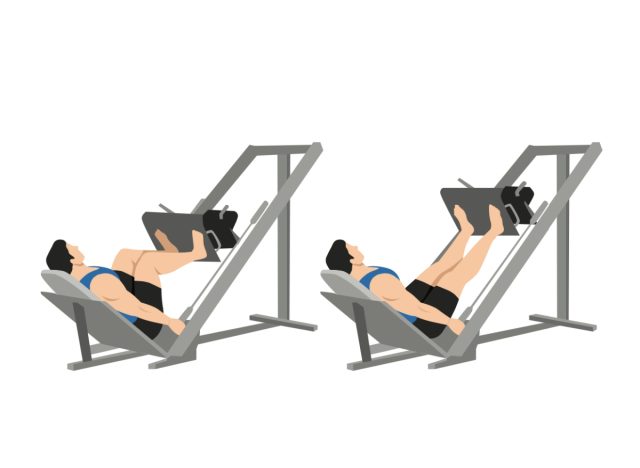

While the leg press can build leg strength, it doesn’t engage the core or stabilizing muscles as effectively as free-weight exercises, limiting functional strength and muscle growth. The fixed path of the machine reduces the need for balance and coordination, resulting in a less comprehensive workout.
Over-reliance on the leg press can lead to muscle imbalances and reduced athletic performance, as it doesn’t mimic real-life movements or engage multiple muscle groups effectively. Plus, improper form on the leg press can put undue stress on the knees and lower back.
What You Should Do Instead: Lunges
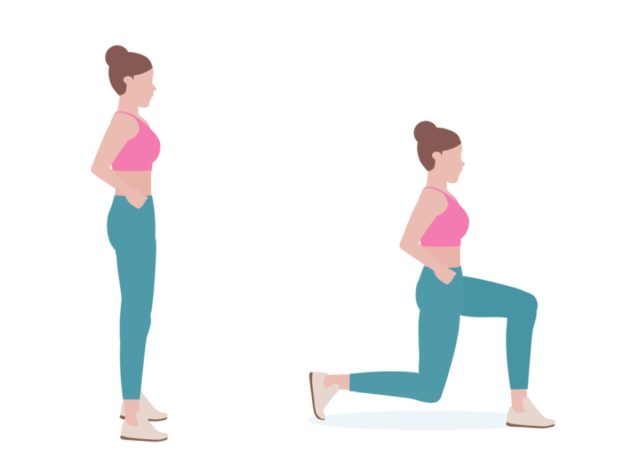

Lunges target the quads, hamstrings, and glutes while also engaging your core and improving balance. This exercise promotes functional strength and coordination, enhancing overall leg development and athletic performance.
Lunges mimic natural movement patterns, improving your ability to perform daily tasks and sports-related activities with ease. By incorporating lunges into your routine, you can achieve balanced muscle growth and improved stability, leading to stronger, more powerful legs.
How to Do Lunges:
Stand with your feet together. Step forward with one leg and lower your body until both knees are bent at 90 degrees. Push through your front heel to return to the starting position.
6. Standing Calf Raises
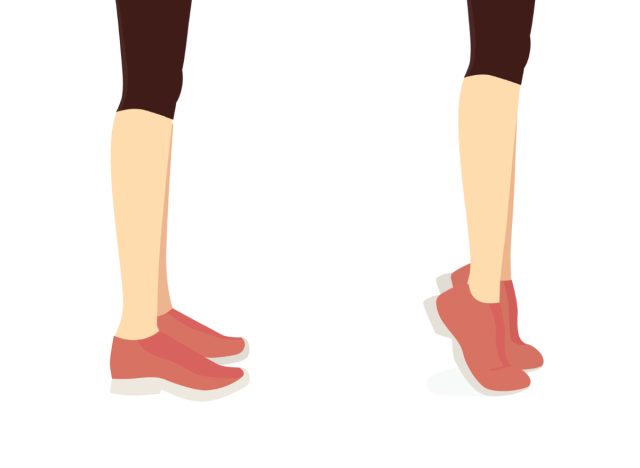

Standing calf raises isolate the calves but don’t provide significant muscle growth compared to compound exercises, neglecting other important leg muscles. This isolation can lead to imbalances and a lack of overall lower-body strength, as the exercise doesn’t engage the quads, hamstrings, or glutes effectively.
Additionally, over-reliance on calf raises can result in limited functional strength and reduced athletic performance, as it doesn’t mimic real-life movements or require balance and coordination. Incorporating more comprehensive exercises can lead to better overall leg development and improved stability.
What You Should Do Instead: Farmers Walk on Toes
This exercise not only targets the calves but also engages the entire lower body and core, promoting functional strength and muscle growth. By incorporating the farmers walk on your toes, you improve balance, coordination, and overall lower body strength, leading to better athletic performance and reduced risk of injury.
This exercise mimics real-life movements, enhancing your ability to perform daily tasks and sports-related activities with ease. Incorporating it into your routine can lead to significant gains in muscle size, strength, and overall functionality.
How to Do Farmers Walk on Toes:
Hold a heavy dumbbell in each hand. Raise up onto your toes and walk forward. Keep your core engaged and maintain balance.
7. Machine Hip Adduction
Machine hip adduction isolates the inner thigh muscles but doesn’t engage the glutes, hamstrings, or quads effectively, leading to imbalanced leg development. This isolation can result in limited overall leg strength and reduced functional fitness, as the exercise doesn’t involve multiple muscle groups or mimic natural movement patterns.
Over-reliance on the hip adduction machine can lead to underdeveloped glutes and hamstrings, hindering overall leg aesthetics and strength. Incorporating more comprehensive exercises can lead to better muscle activation and growth, improving overall leg development and athletic performance.
What You Should Do Instead: Sumo Deadlifts
Sumo deadlifts target the inner thighs, glutes, hamstrings, and quads while also engaging the core and improving overall leg strength and stability. This compound movement promotes balanced muscle growth and functional strength, enhancing your ability to perform daily tasks and sports-related activities with ease.
By incorporating sumo deadlifts into your routine, you activate multiple muscle groups and improve coordination, leading to significant gains in muscle size, strength, and overall lower body functionality. This exercise also improves hip mobility and joint health, reducing the risk of injury and enhancing overall leg performance.
How to Do Sumo Deadlifts:
Stand with your feet wider than shoulder-width apart and your toes pointing outward. Hold a barbell with an overhand grip. Lower your body until your thighs are parallel to the ground, then lift the barbell by straightening your legs and thrusting your hips forward.
By incorporating these more effective exercises into your leg day routine, you’ll not only build bigger muscles but also enhance your overall strength, stability, and athletic performance. Remember, quality and technique matter more than the number of repetitions or the weight lifted. Focus on proper form and controlled movements to maximize your gains and minimize the risk of injury.
Happy lifting!










